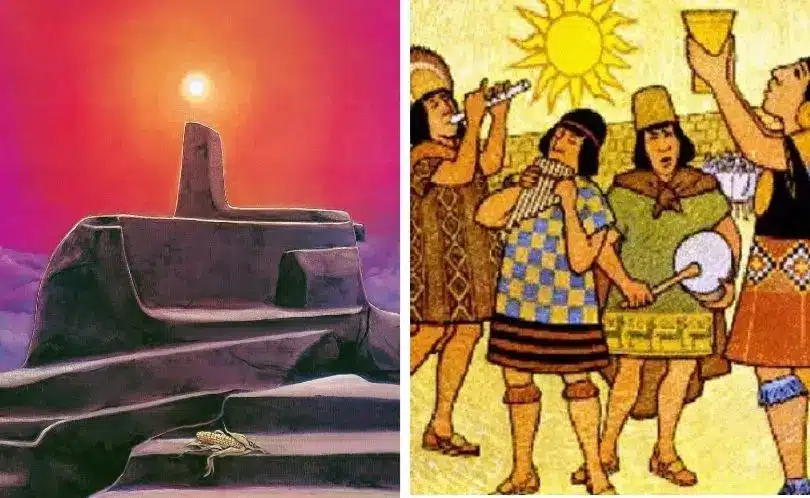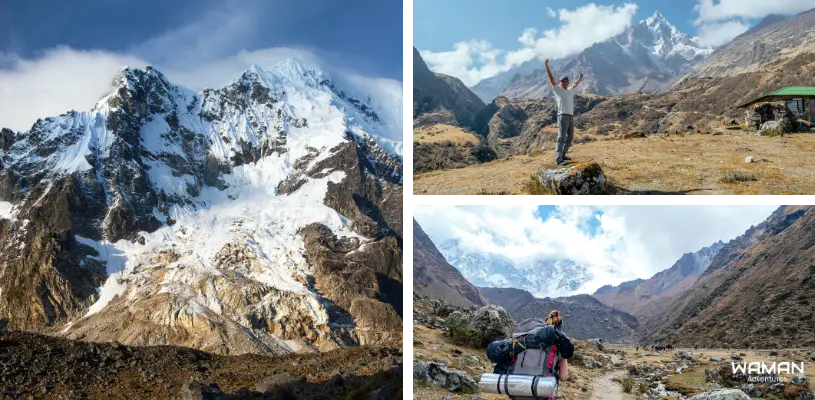The Intihuatana at Machu Picchu: Sacred Stone, Solar Clock, or Something More?
Ultima actualización en 24 April, 2025 por Waman Adventures
Last Updated on 24 April, 2025 by Waman Adventures
The Intihuatana, located in the highest sector of Machu Picchu, is a ceremonial monolith that served as an altar to connect with the sun, worshipped as a deity in the Inca worldview.
Its role relied on solar movements and agricultural rituals; therefore, beyond its architectural value, it holds deep astronomical meaning and remains a historic symbol. Also known in Spanish as the Piedra Intihuatana, this monument invites us to explore its influence on Inca life and how its legacy endures today.
What is the Intihuatana?
It is a carved stone at Machu Picchu that was used to measure time and make astronomical observations, especially those related to the sun. The Intihuatana stone functioned with such precision that its design and orientation align perfectly with the solstices and equinoxes.
This monolith is regarded as one of the Inca civilization’s architectural wonders and stands as an important symbol of their scientific and spiritual achievements. Today, it continues to hold great cultural and archaeological relevance.
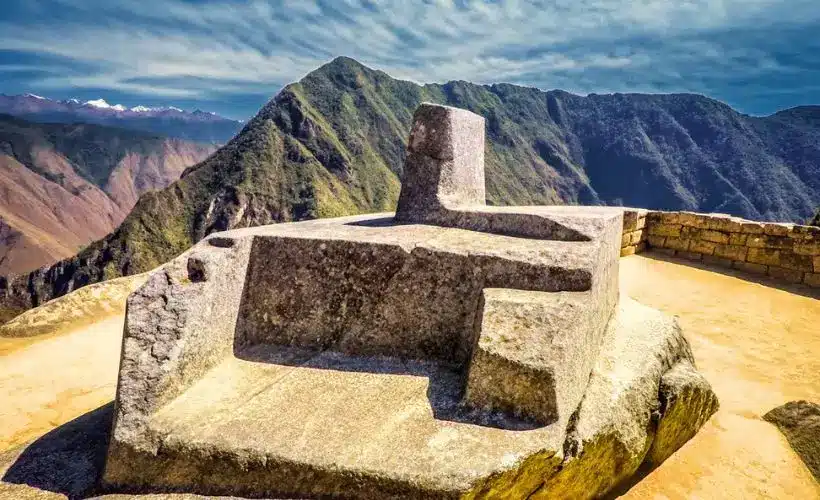
What does Intihuatana mean in Quechua?
In Quechua, it literally means “the place where the sun is tied.” In English, the phrase is often rendered as “hitching post of the sun.” As a ceremonial solar clock, it helped priests monitor the sun during key astronomical events such as solstices and equinoxes.
Did you know…?
This archaeological stone allowed priests and astronomers to measure time and study seasonal changes. Besides its spiritual meaning, it was closely linked to sun worship, as Inti, the sun, was the principal deity.
Its importance in Inca astronomy and rituals
Beyond its ceremonial role, it was an advanced astronomical instrument used by Inca priests to observe the sun and other celestial bodies. This enabled them to predict key events such as solstices and equinoxes, which were essential for agriculture.
These events marked the ideal times to sow, harvest, and hold rituals to thank the deities connected to the land. Consequently, the Intihuatana worked as a precise calendar.
The Intihuatana Stone at Machu Picchu
It is found in the upper section of the archaeological site, at 3,126 m (10,256 ft) above sea level, and was crafted with astronomical precision, aligned perfectly with the cardinal points so priests could observe the sun accurately.
Carved from a single block on a rectangular base, it casts a flawless shadow during the winter solstice. Its design showcases both Inca architectural genius and profound knowledge of astronomy. Today, the Intihuatana Machu Picchu monolith is one of the sanctuary’s most iconic highlights.
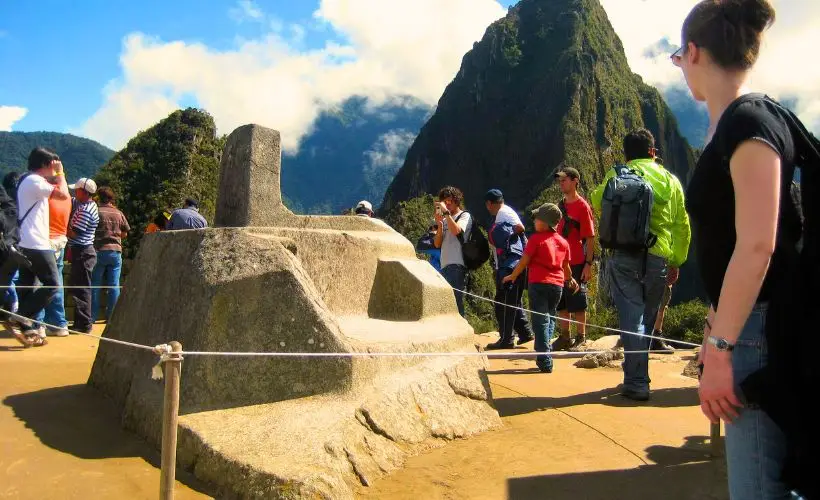
What does the monolith look like?
It is a precisely carved granite structure, featuring a rectangular block rising from a square base, evidence of the Incas’ advanced skills. Its polished surface allowed the observation of projected shadows, suggesting it also functioned as a solar clock. Additionally, its height made it visible from various points in Machu Picchu, probably symbolizing access to the sun’s divine energy.
Location inside Machu Picchu and how to access it
The Intihuatana stands near the Main Plaza, accessible via a route of staircases and defined paths that offer spectacular views of the natural surroundings.
To reach it, you must follow circuit 2, which passes places such as:
- Temple of the Sun
- Guardian House
- Main Temple
- Sacred Rock
Important note:
Visiting hours are 7 a.m. – 10 a.m. The walk is suitable for all ages.
What was the purpose of the Intihuatana?
Astronomical Role
It was essential for pinpointing the sun’s position during solstices and equinoxes, events critical to the Incas, because its alignment with the cardinal points allowed precise solar tracking.
During the winter and summer solstices, the sun aligns with the Intihuatana, enabling the Incas to calculate seasonal changes with accuracy. This astronomical knowledge helped them anticipate weather patterns, vital for crop survival and religious festival planning. The bond between the sun and the seasons was central to the Inca worldview, and the Intihuatana played an indispensable role.
Other Intihuatanas in Peru
While the one at Machu Picchu is the best known, others exist across Peru, such as in the Sacred Valley at Pisac and Ollantaytambo, underscoring the structure’s importance in Andean architecture and cosmology.
Their strategic locations made it easier to observe seasonal shifts and perform religious ceremonies that ensured abundant harvests and land prosperity.
Pisac
In Pisac, an Intihuatana stands within the Sacred Valley archaeological complex. Like its counterpart at Machu Picchu, it was used for astronomical observations and ceremonies.
Positioned on an elevated platform offering panoramic views of the town and valley, this monolith played a significant role in the Inca civilization’s religious and ceremonial life.

Ayacucho
Historical Importance
The Intihuatana at Machu Picchu has withstood time despite earthquake damage and erosion, remaining one of the site’s most visited and significant points.
Curious travelers often ask: How was the Intihuatana stone at Machu Picchu damaged? Centuries of seismic activity, and occasional human interference, have chipped its edges. Preserving it is vital due to its archaeological, cultural, and spiritual value; it continues to symbolize the Incas’ profound connection to the cosmos and their ability to predict the sun’s movements.
Meaning in the Inca worldview
In the Inca worldview, the sun was central to daily life and the environment. Aligned with solar movements, this rock served as a sacred place where the Incas connected with Inti, praying for bountiful harvests and prosperity.
More than a simple observatory or altar, the monolith represented a meeting point between the earthly and the divine, playing a vital role in maintaining balance between humans and gods.
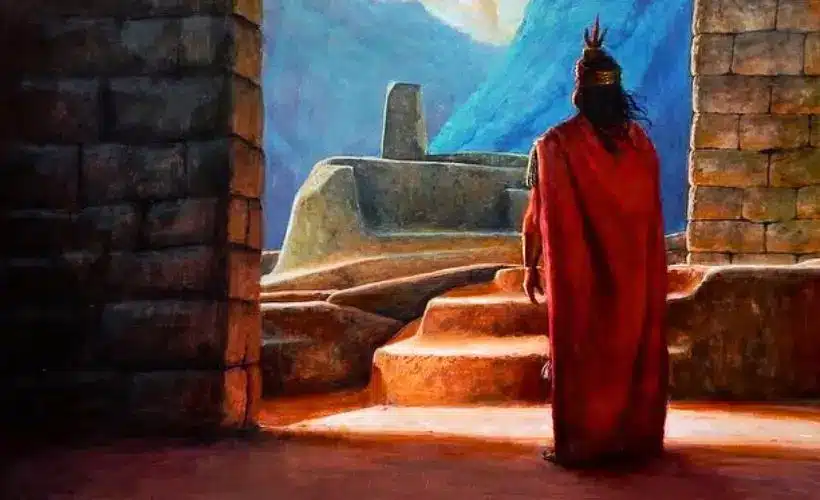
Can you visit the Intihuatana today?
It is one of Machu Picchu’s main attractions, drawing thousands of visitors each year. Although the structure has weathered damage, it still testifies to Inca mastery of astronomy and architecture.
Did you know…?
Its historical and cultural relevance persists, and visitors can approach it to learn about its role as a solar clock and spiritual nexus. Physical contact is restricted to preserve its condition, but it remains a must-see.
How to Get There
Your journey starts in Cusco. From there, take a train to Aguas Calientes, about a three-hour ride through stunning Andean landscapes. Upon arrival, board a bus to the archaeological complex’s entrance.
The Intihuatana sits at the highest part of the site, near the Main Plaza, and is easily accessible within the park. Arrive early to avoid crowds and enjoy a more peaceful experience at the monolith.
Intihuatana circuits inside Machu Picchu
Within Machu Picchu, visitors can follow various circuits that include this attraction along with other key areas such as the Main Plaza, terraces, and the Temple of the Sun.
The most common circuit guides travelers from the Main Plaza to the Intihuatana, offering panoramic views of the Urubamba Valley and the citadel. Along the way, guides explain the history and function of the Intihuatana, highlighting its ties to solar observation and Inca cosmology.

Tour options and ideal times
You can visit independently or join guided tours, the latter is recommended because local experts provide detailed insights into the monolith’s history, astronomy, and cultural significance.
Expert tip:
Visit early in the morning when crowds are thinner and sunlight casts special shadows on the stone, enhancing your view of the monolith and Machu Picchu.
Practical Information for Visitors (Access and Conservation Rules)
Strict conservation rules protect the site. Visitors must avoid touching or climbing the monolith to prevent deterioration; access is limited to a designated area.
Authorities regulate daily tourist numbers to minimize environmental impact and ensure preservation. Follow your guide’s instructions and respect the rules, such as no food or drinks, to enjoy the experience responsibly and safeguard this heritage.
If you’re planning a trip to Cusco, Waman Adventures can craft personalized itineraries for a unique and unforgettable experience. Contact us today and start planning your next adventure!

